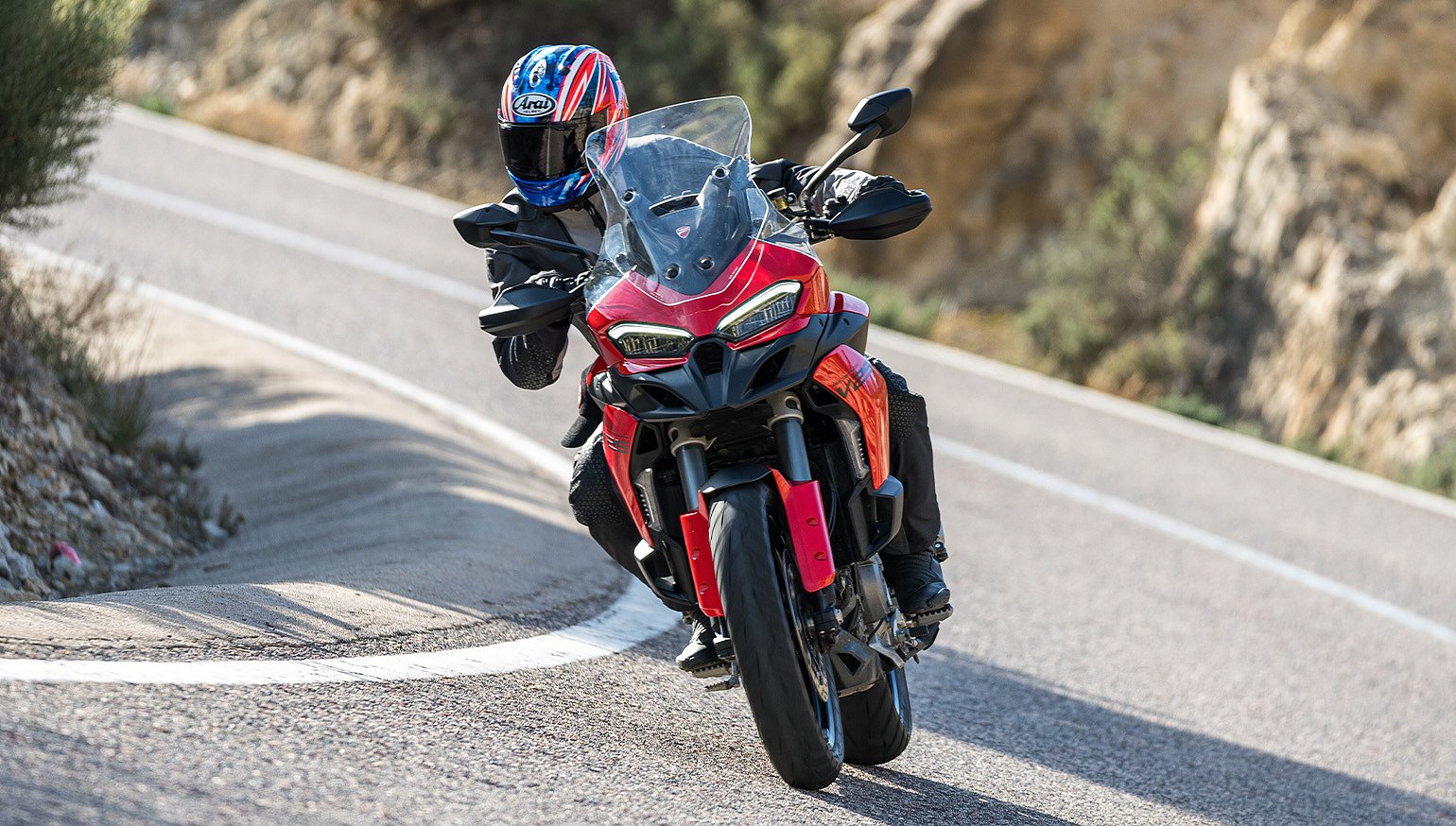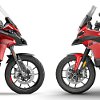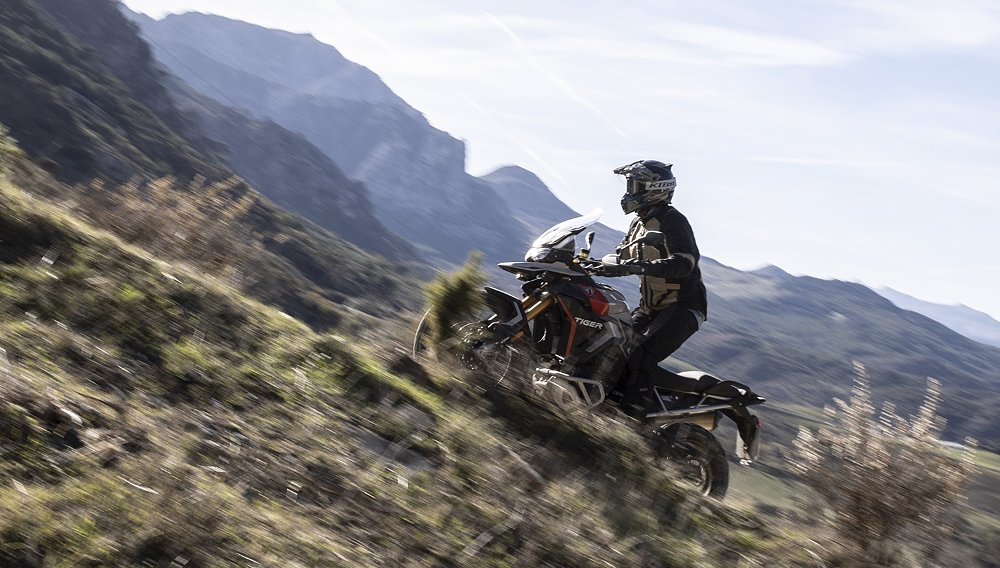Purchasing a sport-touring motorcycle is often a battle between the head and the heart. It requires riders to weigh both passion and practicality. A tug-of-war between logos and pathos. That’s especially true for Multistrada V2 S customers.
Let the syllables “Du-ca-ti” roll off your tongue and images of red sport bikes immediately come to mind. No matter the model — be it a muscle cruiser or supermoto — people expect some sport-bike soul within every Duc. The Multistrada V2 S doesn’t get a pass, either. Even when the Ducati customer requires a workhorse, they expect an Italian stallion.
That leaves the adventure-tourer spinning plates. It has to balance performance and pragmatism. It has to embody athleticism and utility. It can’t just be comfy and convenient, it has to be capable, too. That versatility has always been the Multistrada’s calling card. That’s still the case. The new V2 S just chooses lighter cardstock this time around.
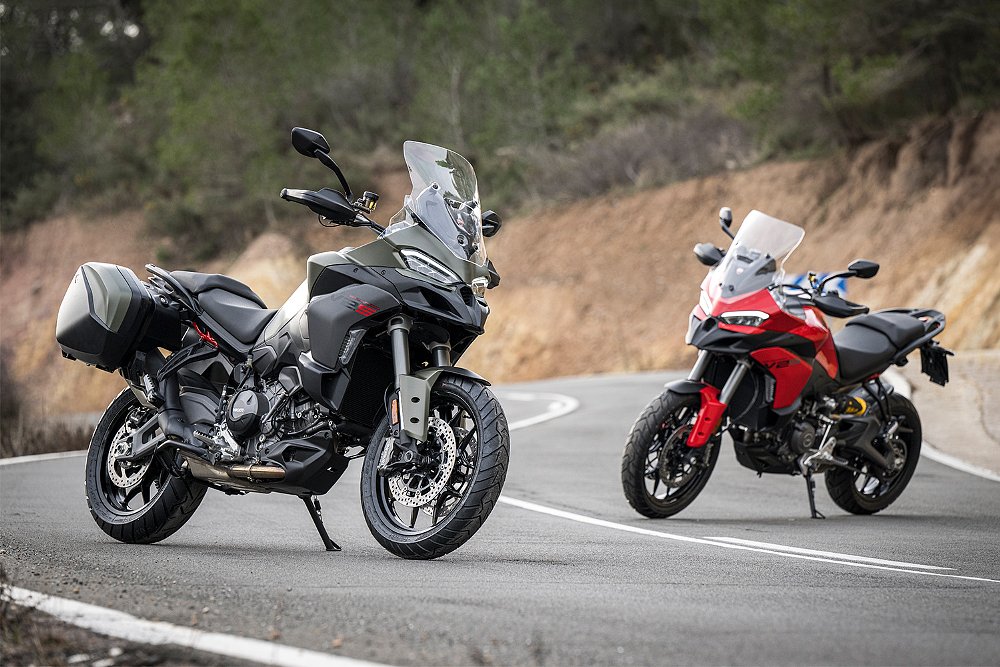
Crash diet
Manufacturers often host global press launches at fancy-pants resorts. The Calderona Wellness Center in Bétera, Spain, is probably the poshest among them. Its gym is state-of-the-art, its pool is competition-sized, its spa is super swanky. Simply put, it attracts a certain clientele. They’re hyper-fit and health-obsessed. They got it and they flaunt it. If the Multistrada V2 S were a person, it would probably hold a lifetime membership.
That’s because the middleweight ADV went on a crash diet in 2025. Its 890 cc V2 is lighter than the 937 cc Testastretta V-twin it replaces. Its monocoque frame saves pounds on the outgoing trellis frame. In all, the twin-powered Multi sheds 40 pounds. It shows off that leaner build, too. The tank is more chiseled. The new stance is sportier. It’s trimmer here. It’s slimmer there. Even the updated headlight recalls the Panigale V2.

The message is clear: the Multistrada V2 S is more fit than ever. At least that’s what Ducati leads us to believe. However, no motorcycle is ridden on paper. You can’t experience a bike in a PowerPoint presentation. The only way to truly find out is by riding the thing, and the hills just north of Valencia provided the ideal proving grounds.
All revved up
Ducati hails its new twin-pot powerplant as its lightest V2 ever. It attributes that lightweight construction to several pound-saving solutions. The new water-oil heat exchanger is one. The aluminum wet cylinder liners are another. Both serve the engine’s thermal exchange properties but they also reduce the number of parts used. Even the hollow-stem intake valves contribute to the cause, shaving precious grams off the total weight. The results are difficult to refute. At 120.8 pounds, the 90-degree V-twin weighs nearly 13 pounds less than the 950 Testastretta.
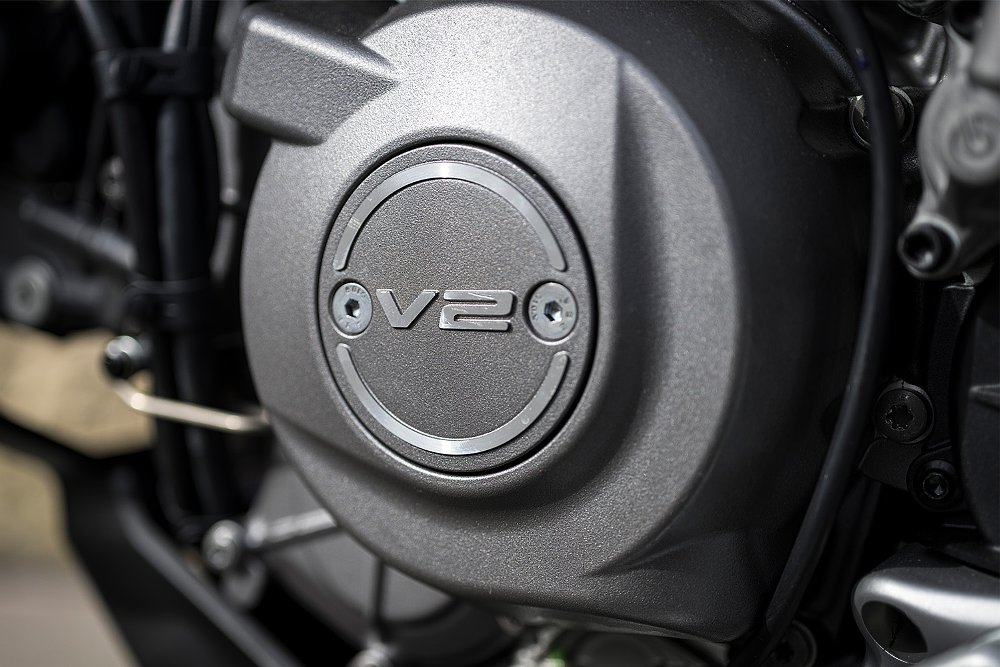
Weight loss didn’t dictate all of Ducati’s decisions, though. A larger flywheel increases rotating inertia by 20%, which reportedly helps smooth acceleration. The new Intake Variable Timing (IVT) shares that same goal. Controlled by an actuator at the end of the camshaft, the system alters intake valve timing across a 52-degree range. The outcome is a “smooth response at low and medium rpm,” all while delivering the “power of a typical Ducati engine at high rpm.” Those three phases were even more distinctive out on the road.
Spain’s Mediterranean Coast is crisp in late January. There isn’t a cloud in the sky but temps are in the teens (Celsius). There’s no snow in the forecast but there’s salt on the mountain roads. Exhaust plumes rise from the tailpipes of 30 Multistradas, all idling in the center of the Calderona Wellness campus. As my colleagues guide their steeds out of the front gate, I ease the clutch out and roll on the throttle — but the MTS stutter steps. A little extra gas and we’re away in earnest. That was just a precursor of things to come.
Initially, I credited the V2’s hesitant bottom end to the Touring mode’s lax throttle response and 95-horsepower restriction. “It must be the ride mode,” I reasoned. Switching to Sport mode quickly dispelled that theory. Even with all 115 horsepower available and the throttle at its most sensitive setting, the engine chugged and lugged from idle up to 3,500 rpm. Forgetting a downshift into a corner or a roundabout only forced the Multi to tractor its way through the exit.
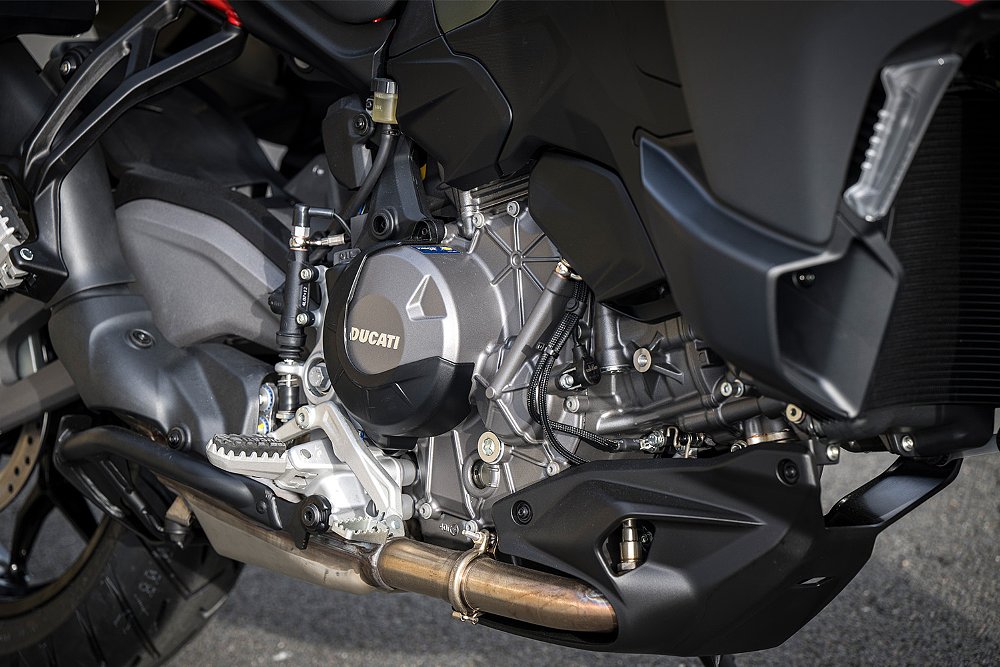
Fortunately, the V2 found firmer footing in the midrange. It felt like a different engine by the time the tach read 4,000 rpm. Throttle was more direct and torque was on tap. Still, the new V2 likes to be revved. It's most responsive above 7,000 rpm, and doesn’t quit pulling until its 11,000 rpm redline. That’s why I kept the engine singing, even if that meant bouncing off the rev limiter a time or two.
Living in the upper register is only possible because the V2 is practically void of vibrations. Well, bothersome ones, at least. Even when cruising on the highway, the Multistrada is content with trotting along north of 8,500 rpm. No problema. The more you climb the revs, the more the V2 rewards. It’s that sporty nature that will appeal to some riders and repel others. At the same time, the Multi’s sporty handling stands to attract all.
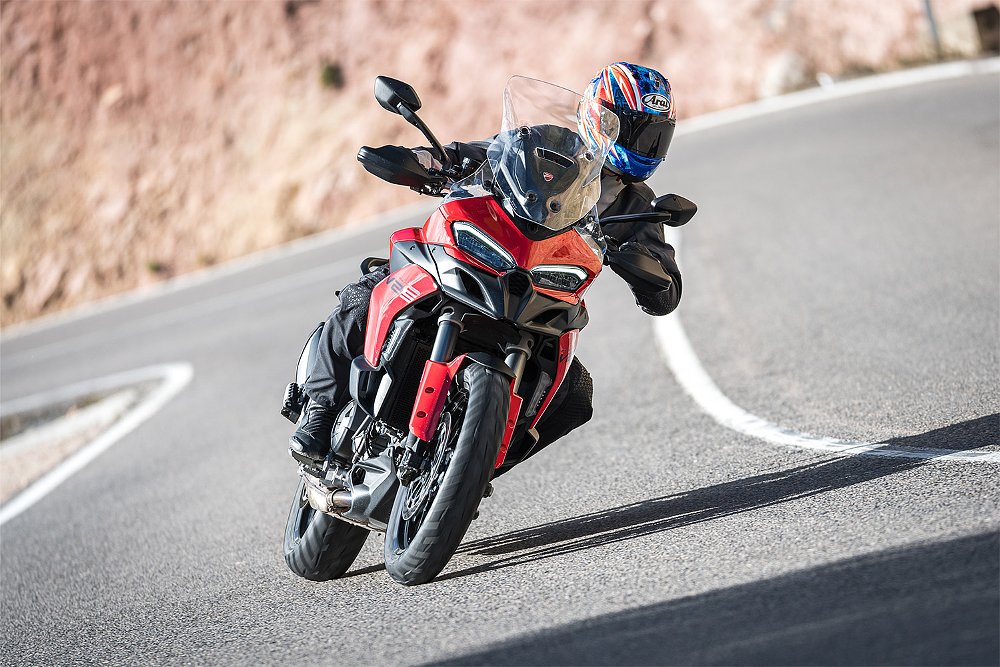
Light work
Global press launches are usually highly organized affairs. When OEMs assign journalists a number in the riding order, they’re expected to maintain that position. Like a row of ducklings, we hold our formation. That doesn’t always promote pace pushing, though. To allow each rider to fully test the V2 S’s limits (to the best of their abilities, that is), Ducati set us free on a twisty mountain road.
There were first-gear hairpins and blind exits. There were downhill braking zones and off-camber corners. There were fallen rocks and unlit tunnels. The Multi handled them all with aplomb. In large part, thanks to its Skyhook suspension. With four modes available (Sport, Comfort, Off-Road, and Low Grip), the semi-active system accounts for practically every scenario.
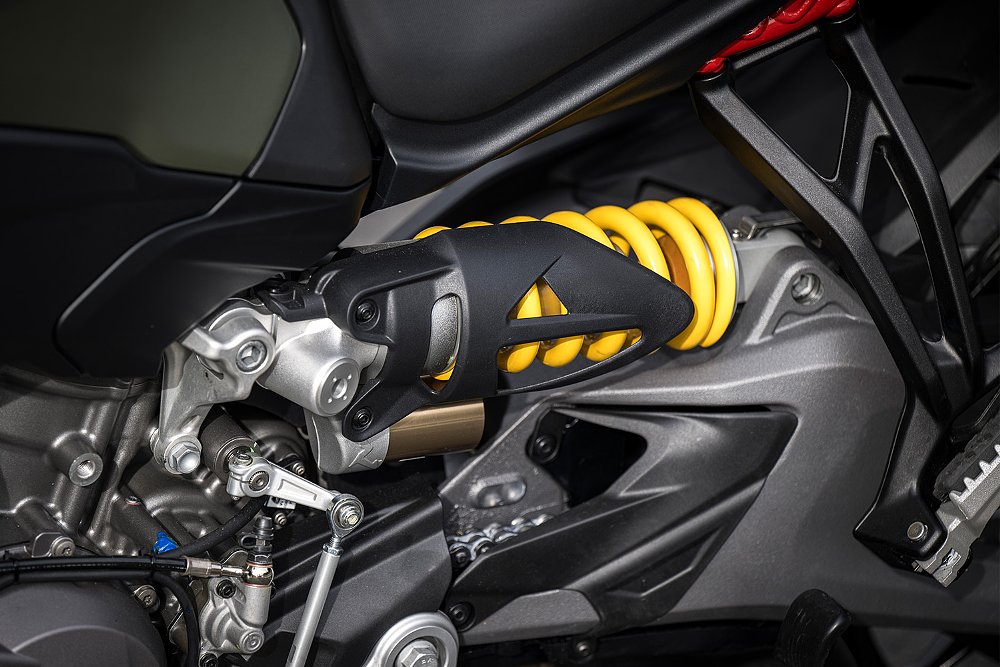
Even in Sport mode, the suspenders are both supple and supportive. Only the harshest and sharpest hits snuck past its damping defenses. Otherwise, it was smooth sailing over cracks, bumps, holes, and humps. It’s just as competent around corners. That’s where its lightweight chassis truly shines.
Ducati made a big deal about the V2’s monocoque frame and its subsequent weight savings. After pushing the Multi through the esses, it’s clear why. Just nudge the wide handlebar and it attacks the turn, holding its line like a bobsled riding an ice run. Steering is light and accurate, with quickness that belies its 19-inch front wheel. But most of all, it’s fun. Putting a bike exactly where you want it typically is.
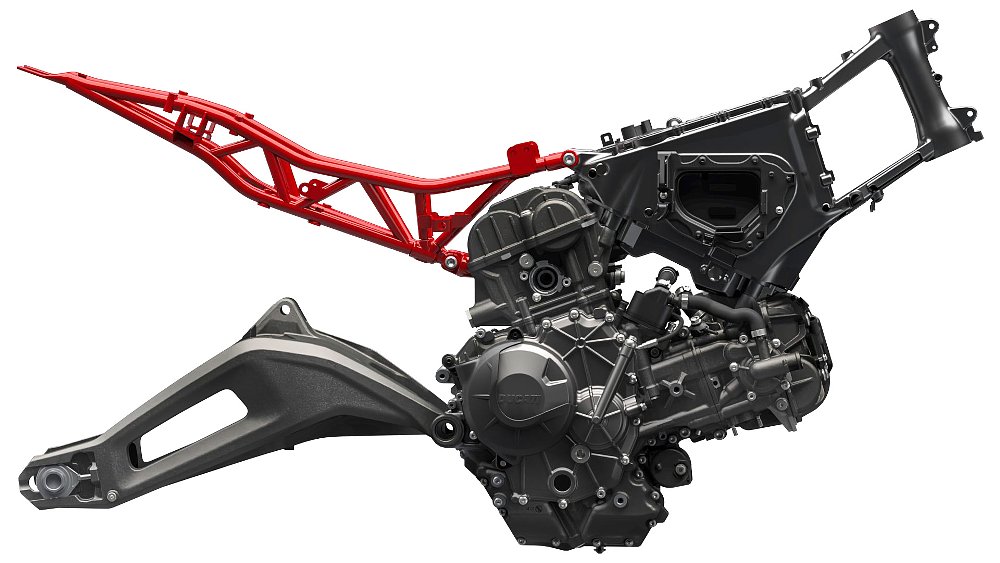
As good as the electronically controlled suspension is, it isn’t faultless. Like the Multistrada V4 S before it, the V2 S automatically lowers the rear end to help riders reach the ground at a stop. Both systems activate and deactivate with a long press of the dedicated suspension button at the right switchgear. The similarities end there.
Whereas the V4 S’s Automatic Lowering Device (ALD) drops the seat between 0.6 and 1.2 inches, the V2 S’s Minimum Preload feature only reduces the seat height by 0.3 inches — at most. It determines that value by measuring the current payload. If you’re on the lighter side, like me, fuggedaboudit.
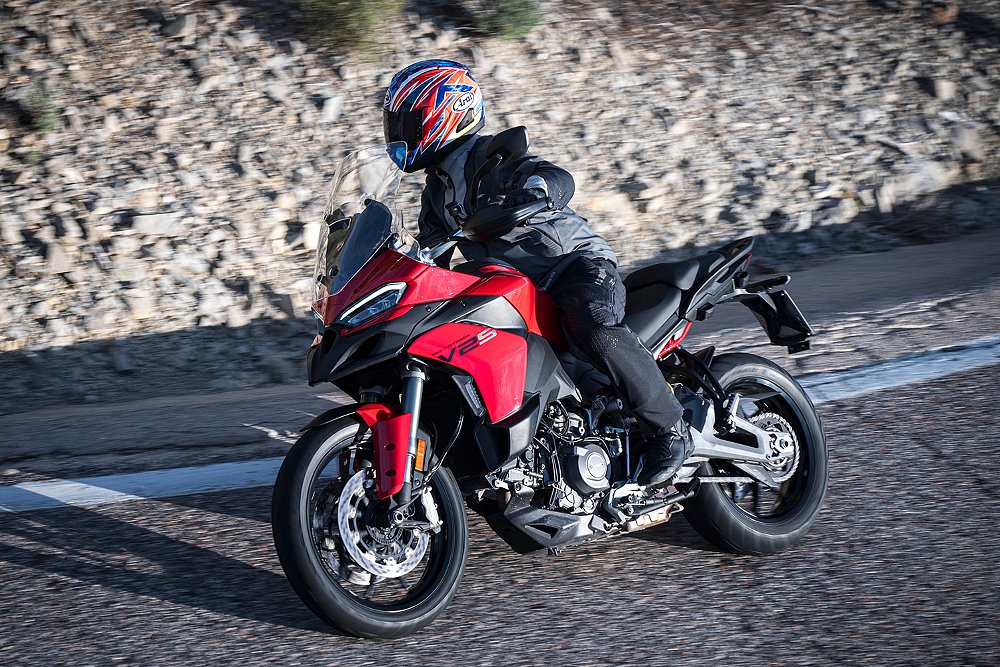
Worst yet, the V2 would truly benefit from the lowering function. Its adjustable perch isn’t all that tall, at 32.7 inches (low) and 33.5 inches (standard). The problem lies with its footpegs, which run into the rider’s calves when standing over the bike. That bows the rider’s legs outward, sacrificing footing.
I can typically flat-foot a bike of the Multistrada’s height, but I stood on the balls of my feet when straddling the V2 S. For many, those shortcomings (pun not intended) won’t be a dealbreaker. However, that’s just one of several hiccups encountered.

Work in progress
Modern Ducatis are chockful of advanced electronics. What’s more impressive is just how well they work. From rear cylinder deactivation to adaptive cruise control to variable valve timing, Duc electronics rarely miss these days. I can’t heap that same level of praise on the Multistrada V2 S. Before I unpack that statement, I have to caveat that Ducati put our group on pre-production models. Not even the plastics were in their final form. Other features were in a similar state of flux.
The quickshifter was first among them. I often relish the opportunity to use a Ducati quickshifter. I rank them as one of, if not the top examples on the market. I expected the same experience from the Multistrada V2’s Quick Shift 2.0. I’ll be the first to admit that it met those expectations 99% of the time. It wasn’t perfect, though.
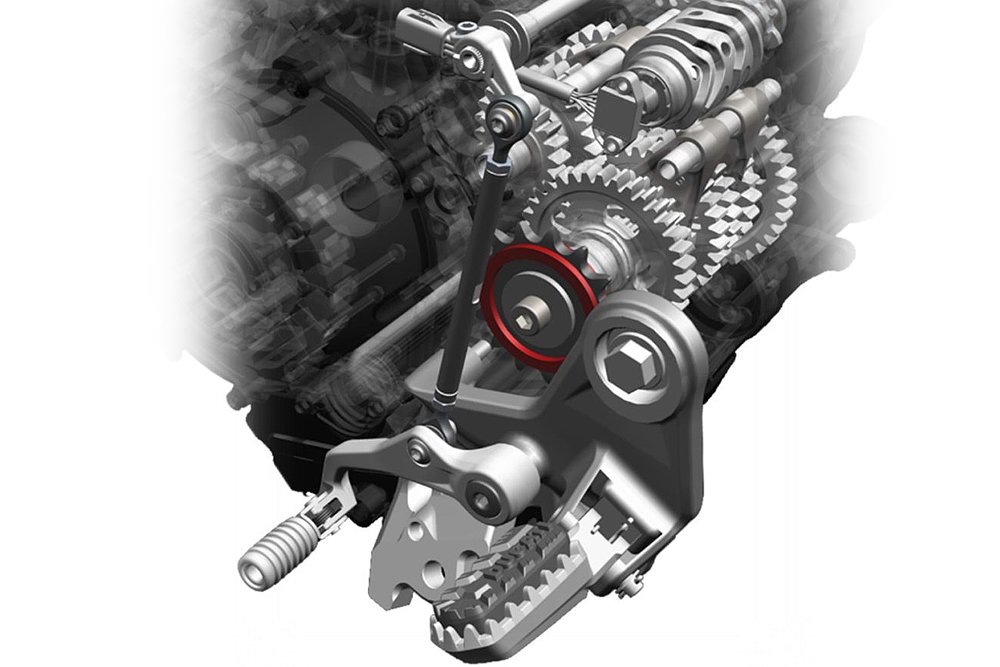
On three separate occasions, the system engaged the next gear then abruptly cut power. One second later, drive returned again. It was equal parts jarring and perplexing. So much so that I questioned whether I was to blame. “Did I kick the shifter too hard? Not hard enough? Am I the problem? Is it me?” Only after a colleague revealed that he, too, encountered the same issue did I stop questioning my part in the act.
There was little question of fault when it came to the dash’s unit conversions. Before each press ride, I switch the speed readout to mph. This American mind could never comprehend kilometers per hour. The pre-production models had the opposite issue.
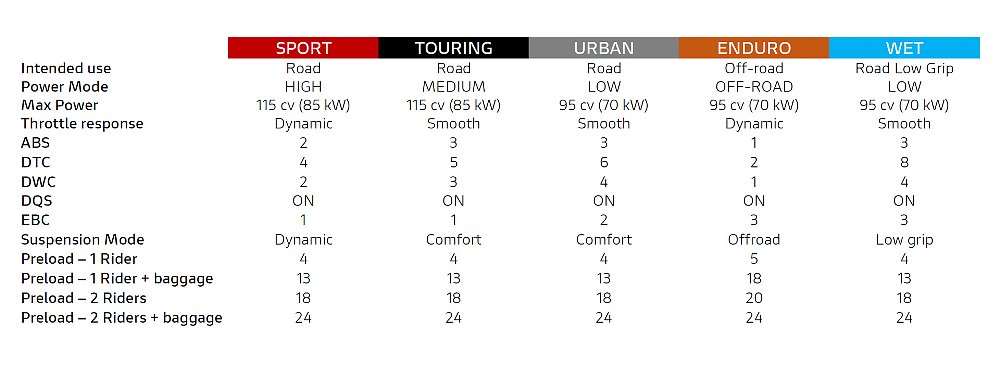
While riding back to the hotel, I stole a glance at a colleague's dash. His speedo read 101 kph. Mine read 38 mph. I didn’t need a conversion chart to tell me the math wasn’t mathing. The same result was achieved when I changed my dash back to kph and he switched over to mph. Now, I trust the U.S.-bound units will nip that problem in the bud, but its worth noting for future owners, nonetheless.
The last electronic foible concerns the V2 S’s cruise control. Most launches hosted in Europe feature mountainside routes. Seldom is there a stretch of highway between the resort’s driveway and the twisty backroads nearby. That just so happened to be the case here, which allowed me to test the Multi’s cruise capabilities. Oftentimes, I simply activate the system, increase/decrease the speed by a few mph, and tick that checkbox. I did the same with the V2 S. The issue only arose when deactivating the feature.
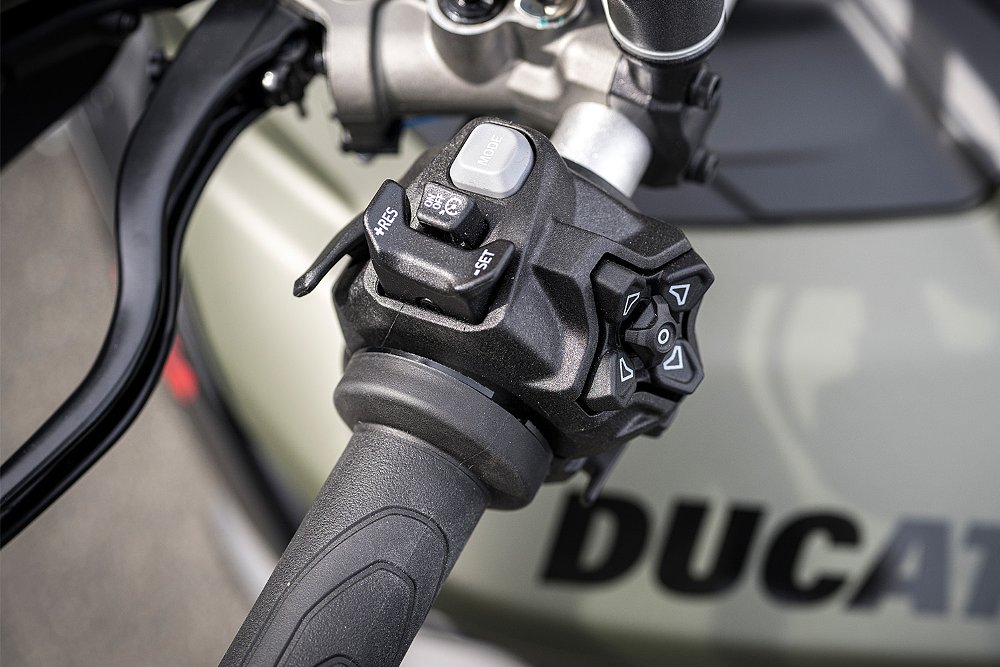
I almost always pull in the clutch to disengage cruise control. I find it less startling than applying the brakes. No such luck here. As soon as I squeezed the clutch lever, the engine revved up to redline, banging off the rev limiter in rapid succession. “WHRR, WHRR, WHRR, WHRR, WHHRRR.” I quickly released the clutch, grabbed the front brake, and checked my shorts. Suffice it to say, that concluded my cruise control testing for the day.
Premium lite
More so than any other fanbase, Ducatisti expect the Italian firm to honor its sport bike heritage. It’s no coincidence that almost every model comes in Ducati Red. Yes, the Multistrada V2 S is an adventure-tourer, but more importantly, it’s a Duc. That will be a major factor for anyone considering the road-biased ADV. That’s an exclusive club, because this MTS occupies exclusive territory.
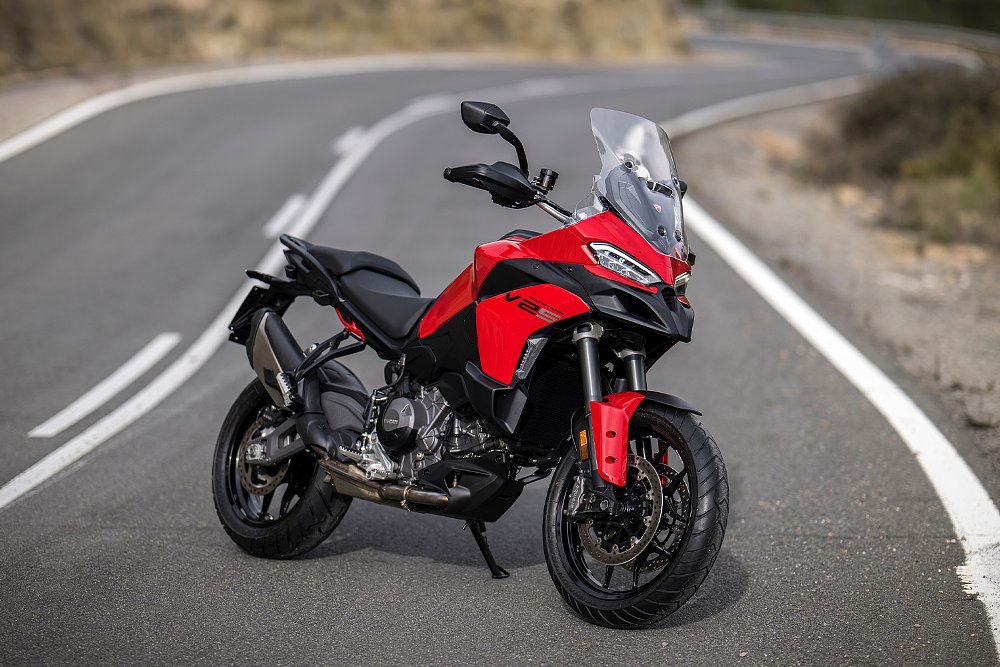
At $19,295, the V2 S stands at the highest end of the middleweight category. Only the Triumph Tiger 900 GT Pro and the BMW F 900 GS Adventure offer direct competition. Still, both models only utilize an electronically adjustable monoshock, not all around semi-active suspension. They cost thousands less than the Ducati as a result. That’s what puts the Multistrada V2 S in its own class. It’s a middleweight outfitted with flagship features. It’s premium lite, if you will.
As such, it should be both sensible and sporty. It should commute on weekdays, tour on weekends, and charge twisty roads everyday. It should be everything at once. To a large degree, it is. All motorcycles require some level of comprise. The Multistrada V2 S is no different. It simply minimizes those compromises to the best of its abilities. In the end, that should win over a lot of heads an hearts.
| 2025 Ducati Multistrada V2 S | |
|---|---|
| Price (MSRP) | $19,295 |
| Engine | 890 cc, liquid-cooled, eight-valve, 90-degree V-twin |
|
Transmission, final drive |
Six-speed, chain |
| Claimed horsepower | 115 @ 10,750 rpm |
| Claimed torque | 67.9 foot-pounds @ 8,250 rpm |
| Frame | Aluminum monocoque |
| Front suspension |
Marzocchi 45 mm fork, electronically adjustable for preload, rebound, and compression damping; 6.7 inches of travel
|
| Rear suspension |
Sachs shock, electronically adjustable for preload, rebound, and compression damping; 6.7 inches of travel
|
| Front brake | Dual Brembo monobloc four-piston calipers, 320 mm discs with ABS |
| Rear brake | Brembo two-piston caliper, 265 mm disc with ABS |
| Rake, trail |
24.3 degrees, 4.15 inches
|
| Wheelbase | 61.9 inches |
| Seat height | 32.7/33.5 inches |
| Fuel capacity | 5.02 gallons |
| Tires | Pirelli Scorpion Trail II 120/70ZR19 front, 170/60ZR17 rear |
| Claimed weight | 445 pounds (without fuel) |
| Available | March 2025 |
| Warranty | 24 months |
| More info | ducati.com |




